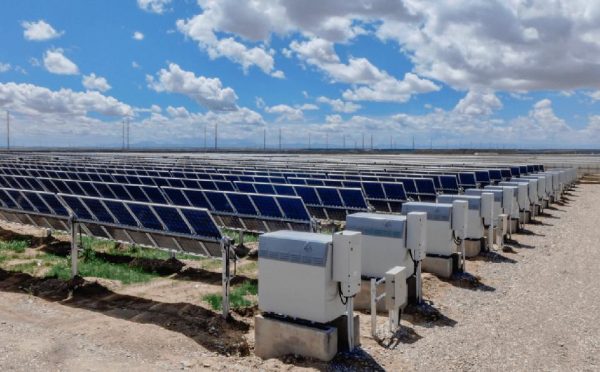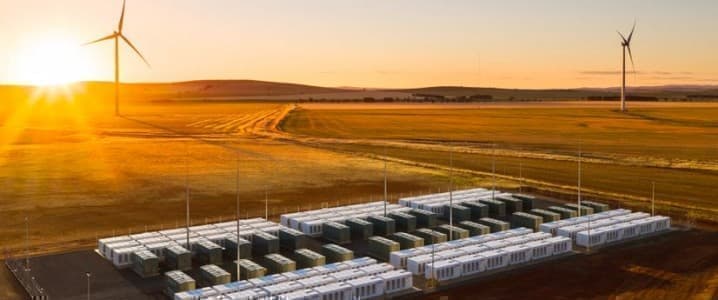Earlier this year, the California Energy Commission (CEC) published a $20 million solicitation to fund research projects for the deployment of long-duration energy storage. The objective was to develop a clear understanding of the role that long-duration energy storage (10 hours or greater) can play in helping to meet the state’s mandates to decarbonize the electricity sector by 2045. Lithium-ion batteries were excluded from the solicitation.
The CEC selected four energy storage projects incorporating vanadium flow batteries (“VFBs”) from North America and UK-based Invinity Energy Systems plc. The four sites are all commercial or industrial facilities that want to self-generate power (like solar) and in some cases have the ability to operate off-grid. Invinity’s total scope is 7.8 megawatt-hours (MWh) of batteries across the four projects. Part of the objective is to be able to take those facilities off-grid for an extended period of time, to avoid interruptions to their power supply during grid outages.
What is a VFB, and how does it differ from the more ubiquitous lithium-ion battery? To answer these questions and learn more about Invinity Energy Systems, this week I spoke with Invinity’s Chief Commercial Officer and co-founder, Matt Harper and Joe Worthington, the company’s Communications Director.
Matt is a mechanical engineer by training, and he explained that he has been building clean energy technology for 25 years. For the past 15 years, he has been developing flow batteries.
Vanadium is an element that can commonly exist in four different oxidation states. That just means that it can exist as an ion with different charges. For example, a vanadium ion that is missing three electrons would have a charge of V3+. If you add an electron to it, it converts to a V2+ ion. This transfer of electrons back and forth is what makes VFBs charge and discharge, as the vanadium ions in the battery swing from V2+ to V5+. Related: Aramco’s Profit Drop Is A Dire Warning For Saudi Arabia
This differs from lithium-ion batteries in that every time lithium charges and discharges it is plating and deplating lithium metal on the cathode. Although this reaction is almost completely reversible, it will lead to degradation after a few thousand cycles and performance will decrease.
A VFB consists of two tanks of electrolyte dissolved in water and separated by a proton exchange membrane. Both electrolytes are vanadium-based. As the batteries are charged and discharged, vanadium ions are simply moved between oxidation states. According to Matt, this can be done tens of thousands of times over a time period measured in decades, with no degradation in the ability of the vanadium solutions to hold charge.
They estimate that every 10-20 years, the membrane that the ionic species crosses over will require a replacement. Again, this is unlike a lithium-ion battery where the entire battery would need to be replaced. They compared this to maintenance on a car. Matt indicated they have products in the field that have done more than 30 years of charging and discharging cycling.
Li-ion batteries do have an advantage in energy density, which is why VFBs are being targeted for stationary applications. However, compared to Li-ion batteries for grid scale storage, there is no fire risk with VFBs. Li-ion batteries need to be spaced farther apart or have sufficient fire suppression. Thus, VFBs can be packed tighter than lithium, so the footprint for grid-scale operation is comparable.
Regarding the cost, Invinity reports that they sell their batteries at a price in the same ballpark as Li-ion per MWh for the industrial market. The benefit of Invinity’s VFB comes in the levelized cost over time because of the decades of service a single device can deliver. VFBs can charge and discharge multiple full cycles daily for 20 years. Even though you may get thousands of cycles with a Li-ion battery, for a utility or commercial storage application where daily cycling is needed that may not be enough to give Li-ion the advantage.
Invinity’s core technology – the “cell stack” at the core of the VFB – is developed and manufactured in Vancouver, Canada. The company also has a supplier in China that does metal enclosures. However, final assembly is done as close as possible to where projects are delivered due to the size of the installations. Related: The Biggest Ever Transfer Of Wealth Is Happening Right Now
Invinity does have commercial applications of its VFBs installed at more than 40 sites across Europe, North America, Africa, Asia and Australasia. Below is a 2 MWh project in China that has been in operation for two years.

 2 MWh installation at Huanghe Hydro in China. INVINITY ENERGY SYSTEMS.
2 MWh installation at Huanghe Hydro in China. INVINITY ENERGY SYSTEMS.I asked what Invinity does differently from competitors in this space. Matt told me that the approach that Invinity took was to take the fundamentals of chemistry and deliver them as a turn-key product. They relied on high-volume manufacturing to get the price down and get good quality control. Some VFB manufacturers couldn’t deliver low-cost product because they didn’t standardize production. Invinity has produced about 250 modules since 2017, and they are currently building a site, part of the Energy Superhub Oxford in the UK, that will have 162 modules.
There are presently commercial applications of V flow batteries. The focus is on commercial/industrial applications that are offsetting peak tariff periods, a fair bit in grid-scale generation, and also standalone microgrids where individuals want to be off-grid all the time or during power outages.
Finally, I asked about the supply of vanadium. I learned that vanadium is the 13th most abundant metallic element in the earth’s crust. It is more abundant than copper. Further, the supply of vanadium in the battery can be recycled practically endlessly as the vanadium ions are moved between oxidation states, and not destroyed or degraded. In addition to the vanadium electrolyte being infinitely reusable, the balance of Invinity’s VFB is made almost entirely of common materials, like steel and household plastics, that can be easily recycled.
There are large vanadium resources in the U.S. At present, 90% of the supply goes into steel manufacture. So, steel-producing regions like China are currently the largest producers of vanadium.
In conclusion, Matt acknowledged that Li-ion batteries have proven that energy storage can be profitable, and VFBs have benefitted from the progress. He added that Li-ion batteries are great for storing 2-4 hours of energy 50 times a year, but VFBs shine in long-duration applications where energy is required every day; for example, when trying to make solar energy available on demand around the clock.
But concentration around a specific technology — especially one like the Li-ion battery that for grid storage is manufactured almost exclusively offshore — is a concern. So, VFBs offer diversification in the storage space, both in the manufacturing location, and directed at a market that is perhaps a better fit than for Li-ion batteries.
By Robert Rapier
More Top Reads From Oilprice.com:
- Oil Prices Jump On Large Crude Inventory Draw
- Four OPEC+ Members Favor Extended Cuts
- The U.S. Officially Quits The Paris Climate Agreement

















